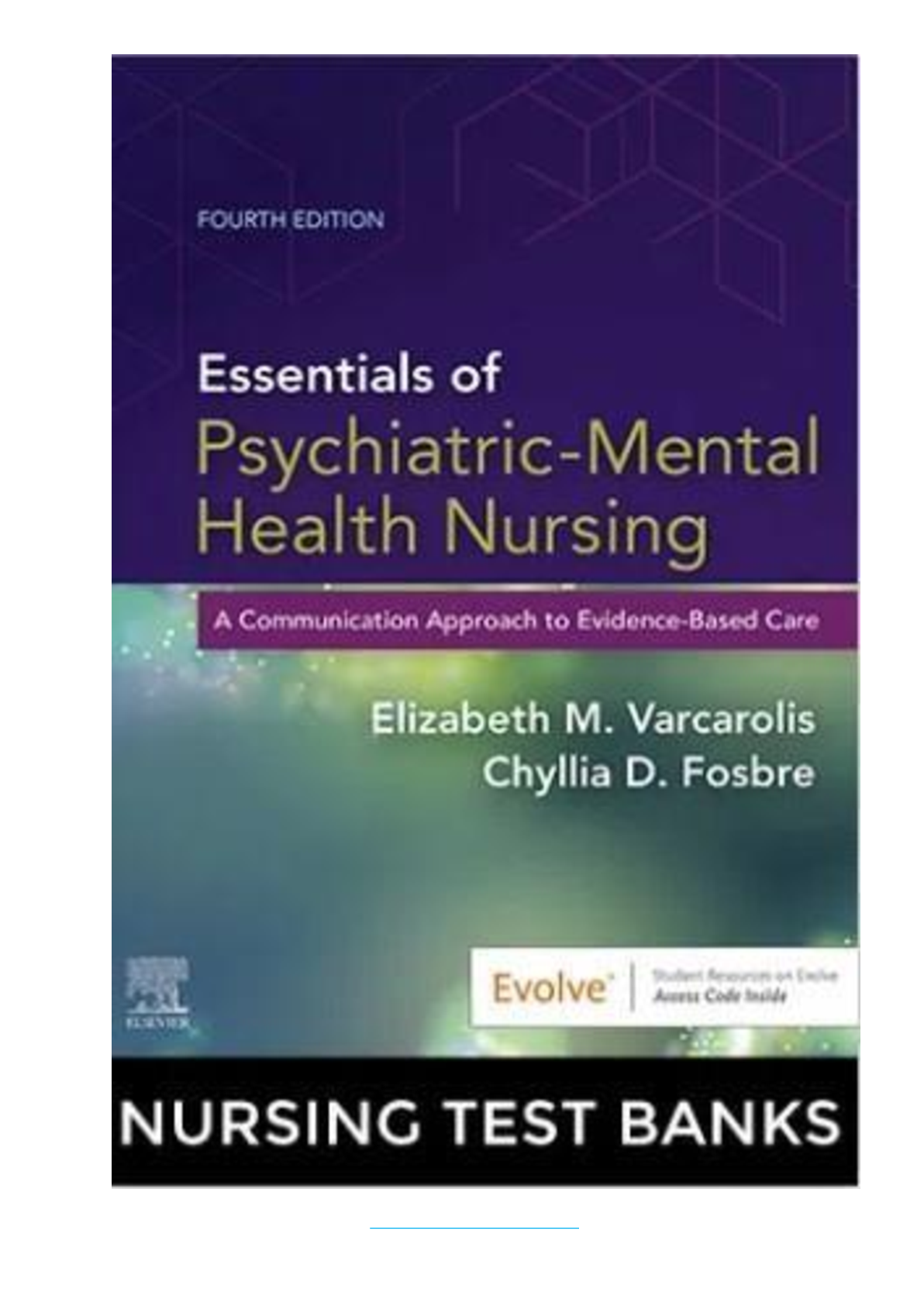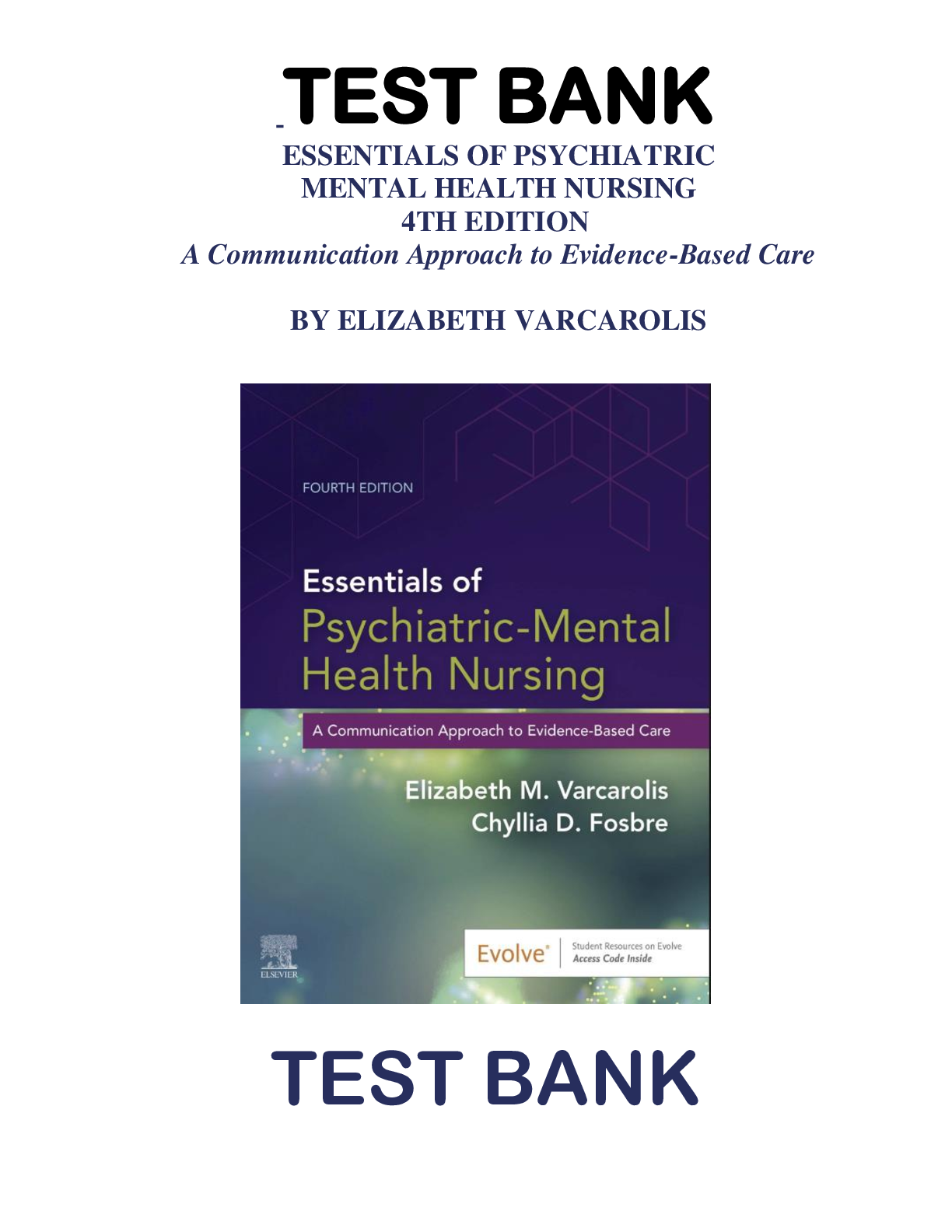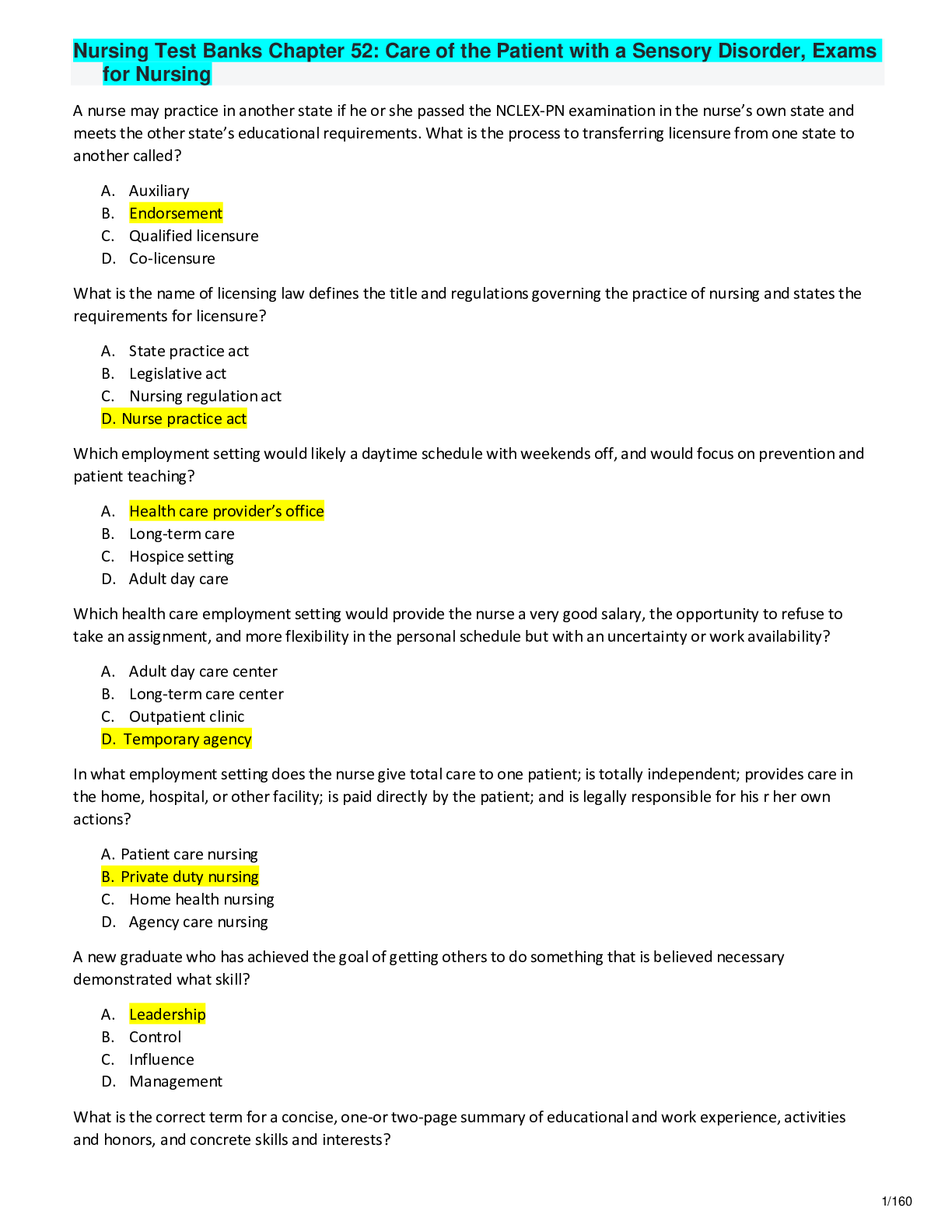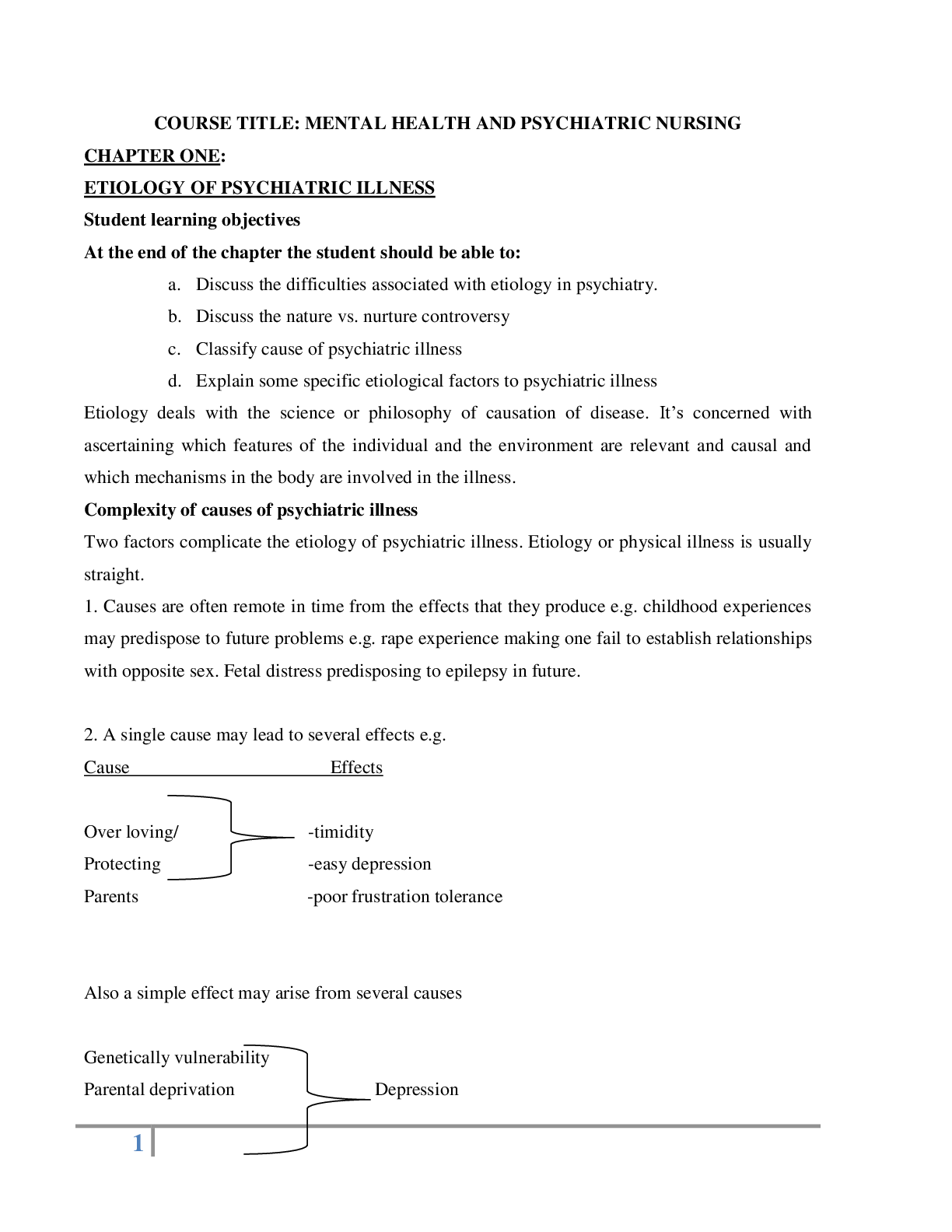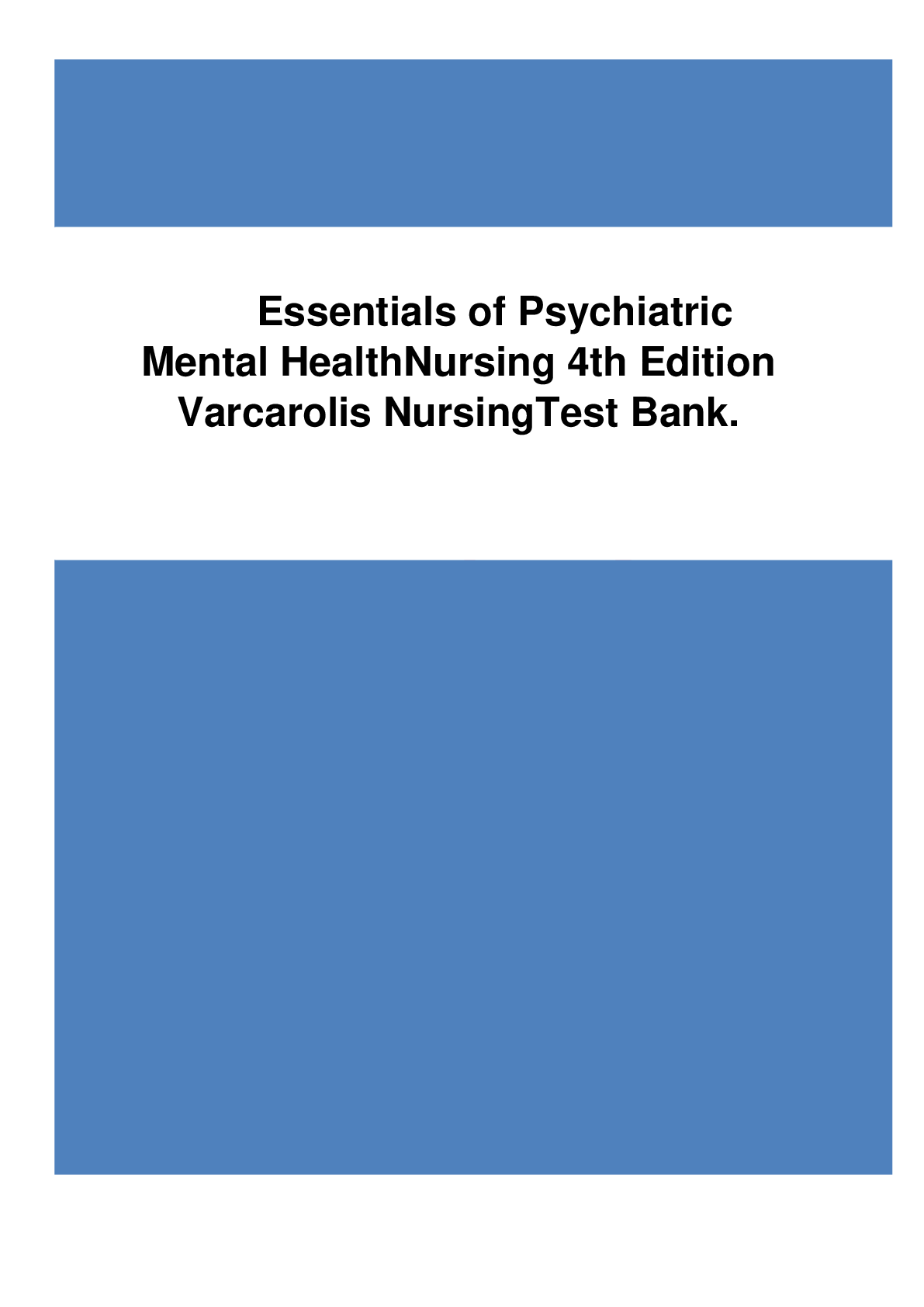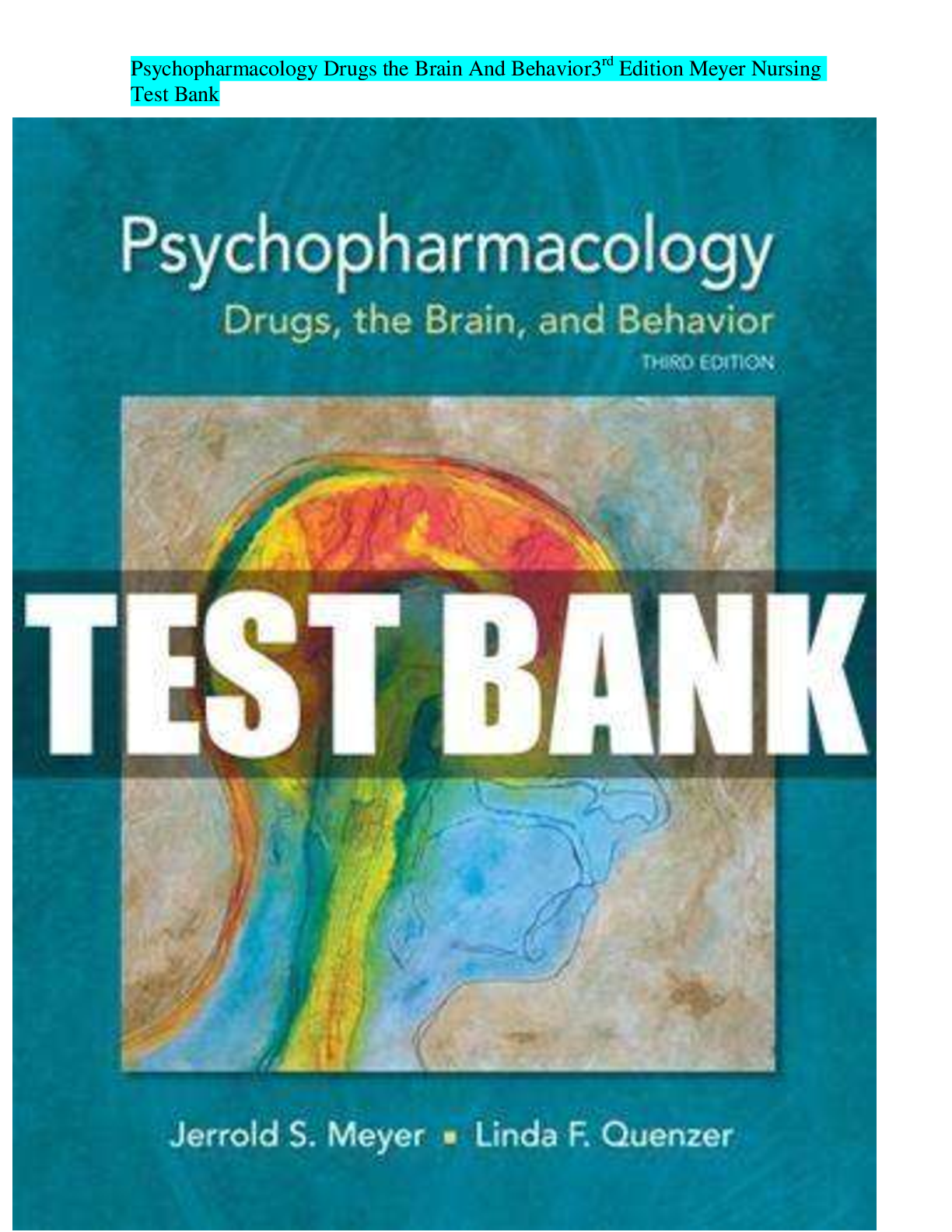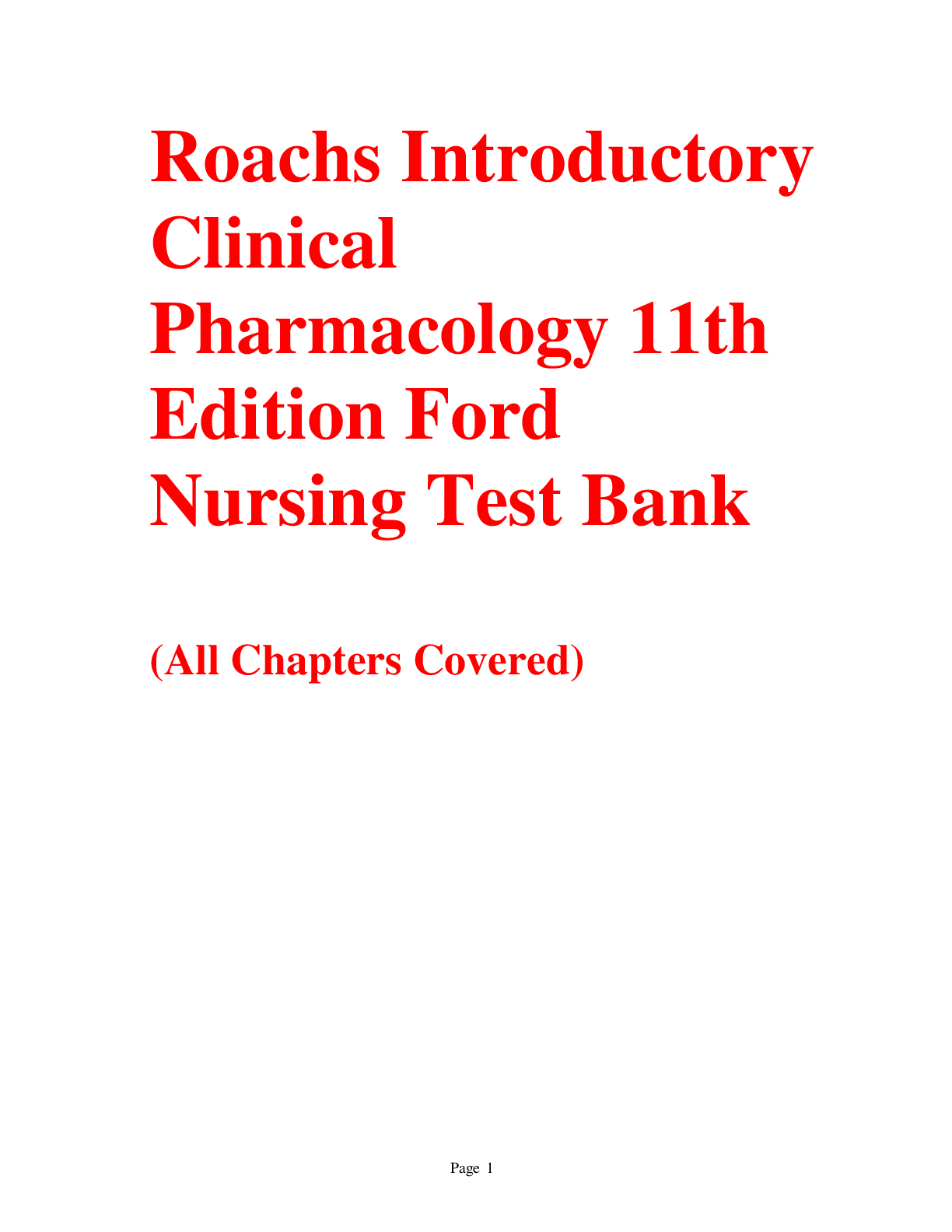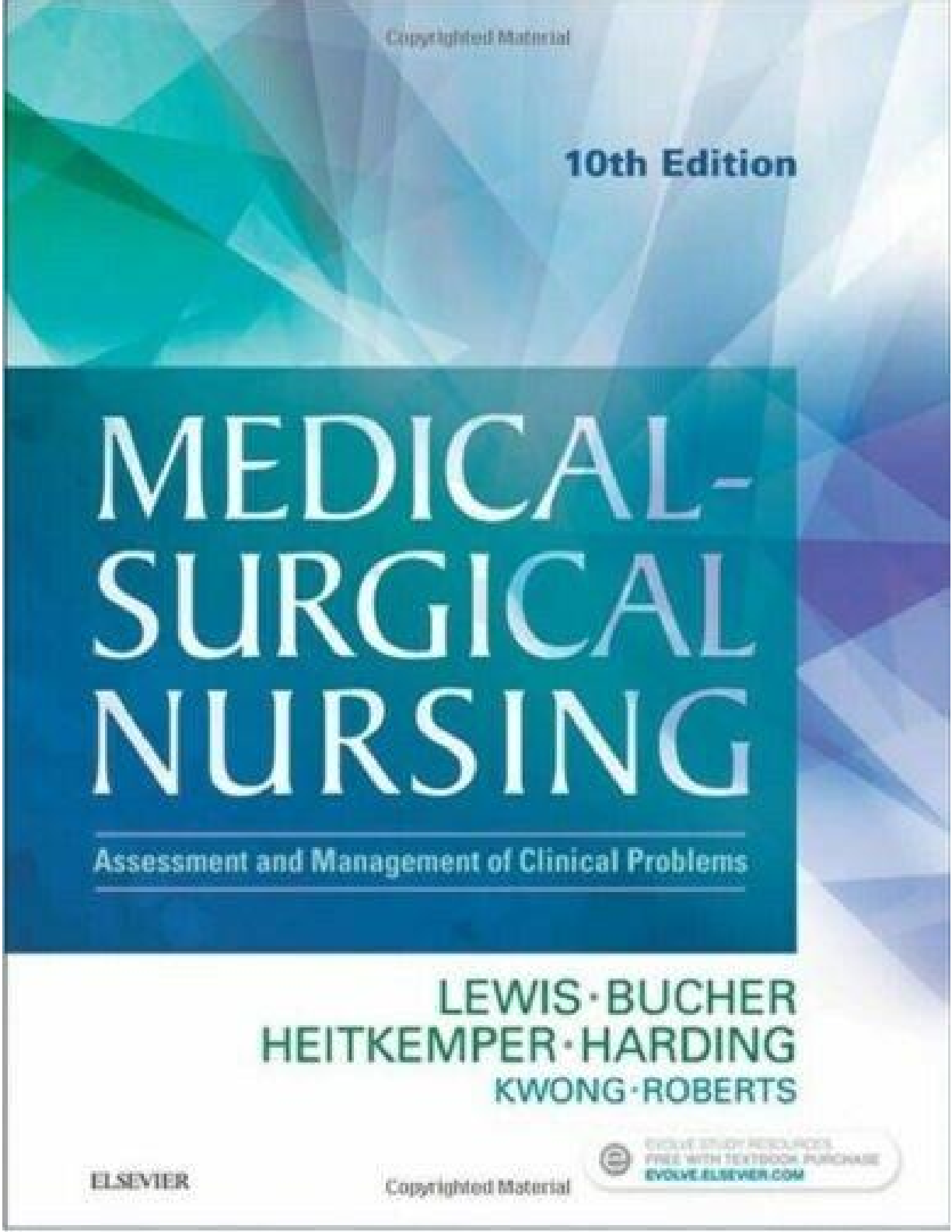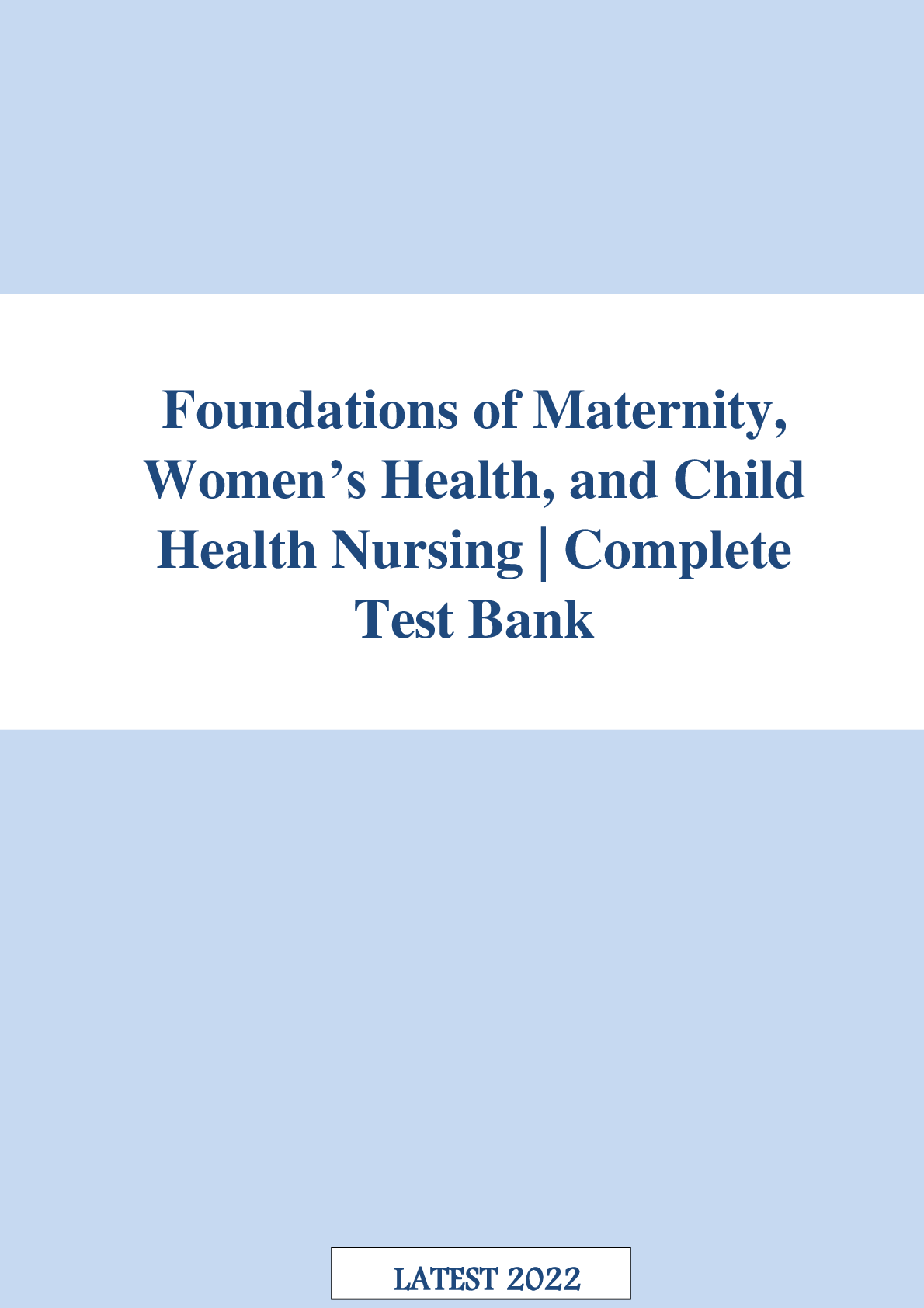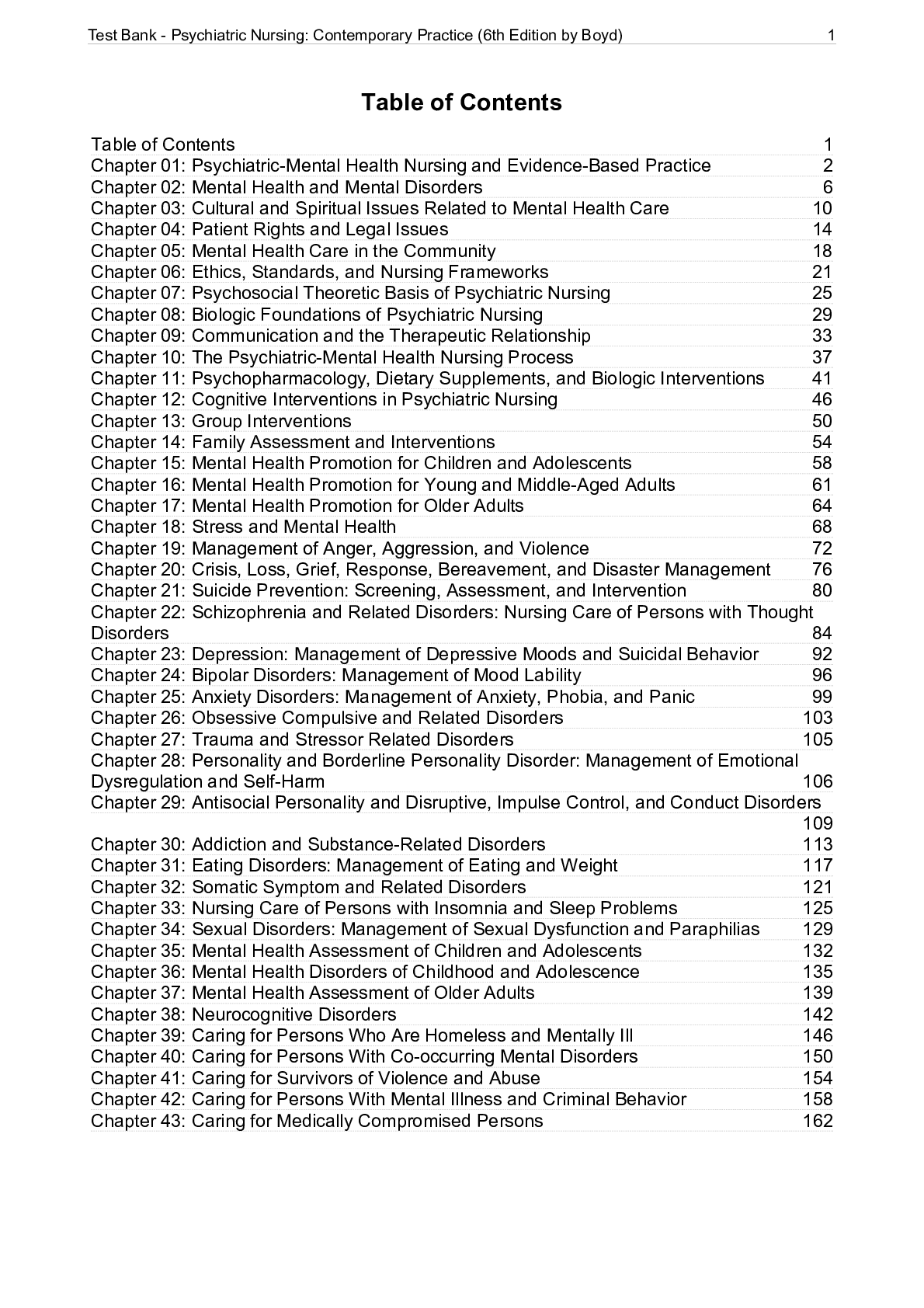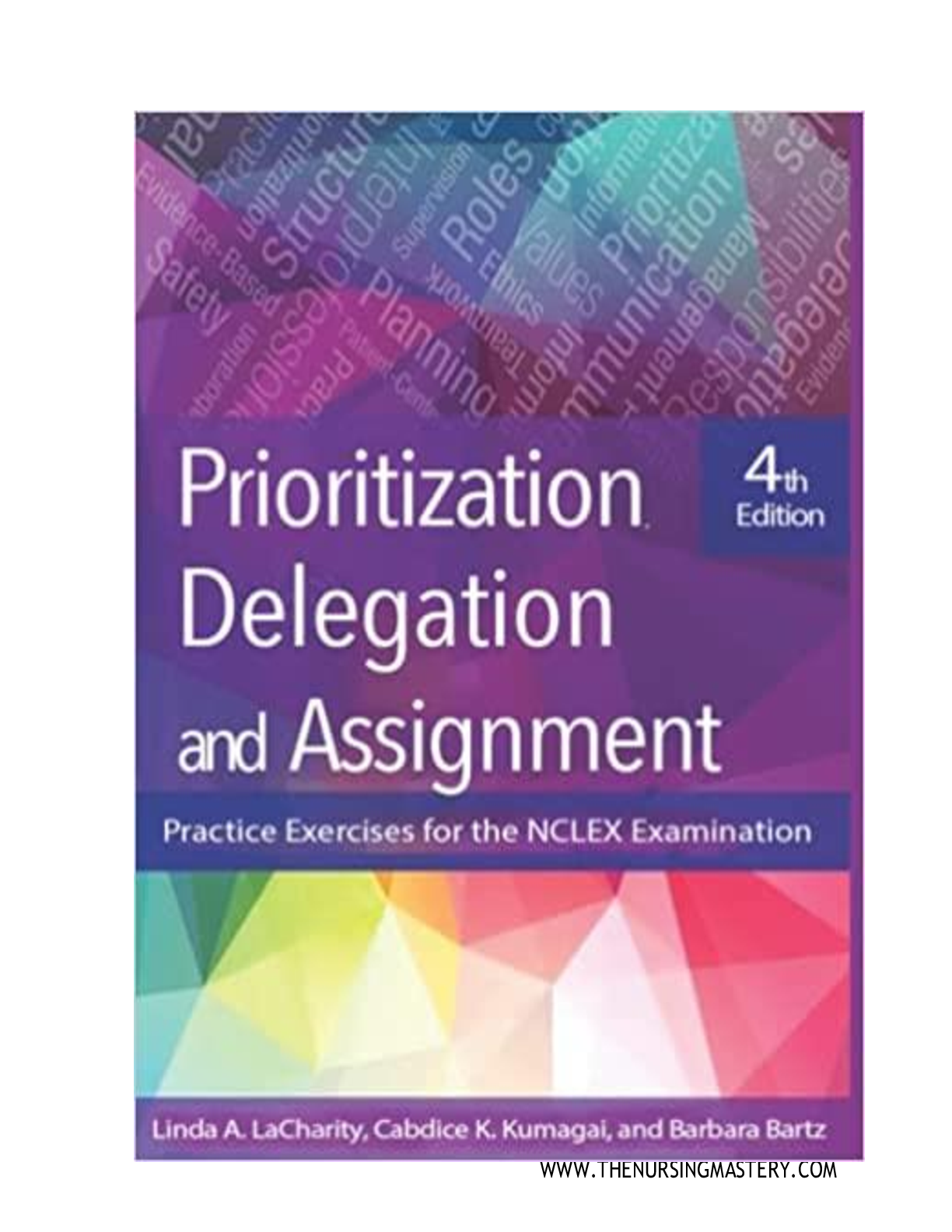Lower Respiratory Problems Lewis: Medical-Surgical Nursing Test Bank
Document Content and Description Below
MULTIPLE CHOICE 1. After assessment of a patient with pneumonia, the nurse identifies a nursing diagnosis of ineffective airway clearance. Which assessment data best supports this diagnosis? a. Wea... k cough effort b. Profuse green sputum c. Respiratory rate of 28 breaths/minute d. Resting pulse oximetry (SpO2) of 85% ANS: A The weak, nonproductive cough indicates that the patient is unable to clear the airway effectively. The other data would be used to support diagnoses such as impaired gas exchange and ineffective breathing pattern. DIF: Cognitive Level: Analyze (analysis) REF: 505 TOP: Nursing Process: Diagnosis MSC: NCLEX: Physiological Integrity 2. The nurse assesses the chest of a patient with pneumococcal pneumonia. Which finding would the nurse expect? a. Increased tactile fremitus c. Hyperresonance to percussion b. Dry, nonproductive cough d. A grating sound on auscultation ANS: A Increased tactile fremitus over the area of pulmonary consolidation is expected with bacterial pneumonias. Dullness to percussion would be expected. Pneumococcal pneumonia typically presents with a loose, productive cough. Adventitious breath sounds such as crackles and wheezes are typical. A grating sound is more representative of a pleural friction rub rather than pneumonia. DIF: Cognitive Level: Apply (application) REF: 503 TOP: Nursing Process: Assessment MSC: NCLEX: Physiological Integrity 3. A patient with bacterial pneumonia has coarse crackles and thick sputum. Which action should the nurse plan to promote airway clearance? a. Restrict oral fluids during the day. b. Teach pursed-lip breathing technique. c. Assist the patient to splint the chest when coughing. d. Encourage the patient to wear the nasal O2 cannula. ANS: C Coughing is less painful and more likely to be effective when the patient splints the chest during coughing. Fluids should be encouraged to help liquefy secretions. Nasal O2 will improve gas exchange, but will not improve airway clearance. Pursed-lip breathing is used to improve gas exchange in patients with chronic obstructive pulmonary disease but will not improve airway clearance. DIF: Cognitive Level: Apply (application) REF: 505 TOP: Nursing Process: Planning MSC: NCLEX: Physiological Integrity 4. The nurse provides discharge instructions to a patient who was hospitalized for pneumonia. Which statement, if made by the patient, indicates a good understanding of the instructions? a. “I will call my health care provider if I still feel tired after a week.” b. “I will continue to do deep breathing and coughing exercises at home.” c. “I will schedule two appointments for the pneumonia and influenza vaccines.” d. “I will cancel my follow-up chest x-ray appointment if I feel better next week.” ANS: B Patients should continue to cough and deep breathe after discharge. Fatigue is expected for several weeks. The pneumococcal and influenza vaccines can be given at the same time in different arms. A follow-up chest x-ray needs to be done in 6 to 8 weeks to evaluate resolution of pneumonia. DIF: Cognitive Level: Apply (application) REF: 506 TOP: Nursing Process: Evaluation MSC: NCLEX: Physiological Integrity 5. Which action should the nurse plan to prevent aspiration in a high-risk patient? a. Turn and reposition an immobile patient at least every 2 hours. b. Place a patient with altered consciousness in a side-lying position. c. Insert a nasogastric tube for feeding a patient with high calorie needs. d. Monitor respiratory symptoms in a patient who is immunosuppressed. ANS: B With loss of consciousness, the gag and cough reflexes are depressed, and aspiration is more likely to occur. The risk for aspiration is decreased when patients with a decreased level of consciousness are placed in a side-lying or upright position. Frequent turning prevents pooling of secretions in immobilized patients but will not decrease the risk for aspiration in patients at risk. Monitoring of parameters such as breath sounds and O2 saturation will help detect pneumonia in immunocompromised patients, but it will not decrease the risk for aspiration. Conditions that increase the risk of aspiration include decreased level of consciousness (e.g., seizure, anesthesia, head injury, stroke, alcohol intake), difficulty swallowing, and nasogastric intubation with or without tube feeding. DIF: Cognitive Level: Apply (application) REF: 505 TOP: Nursing Process: Planning MSC: NCLEX: Physiological Integrity 6. A patient with right lower-lobe pneumonia has been treated with IV antibiotics for 3 days. Which assessment data obtained by the nurse indicates that the treatment is effective? a. Bronchial breath sounds are heard at the right base. b. The patient coughs up small amounts of green mucus. c. The patient’s white blood cell (WBC) count is 9000/µL. d. Increased tactile fremitus is palpable over the right chest. ANS: C The normal WBC count indicates that the antibiotics have been effective. All the other data suggest that a change in treatment is needed. DIF: Cognitive Level: Apply (application) REF: 504 TOP: Nursing Process: Evaluation MSC: NCLEX: Physiological Integrity 7. The health care provider writes an order for bacteriologic testing for a patient who has a positive tuberculosis skin test. Which action should the nurse take? a. Teach about the reason for the blood tests. b. Schedule an appointment for a chest x-ray. c. Teach the patient about providing specimens for 3 consecutive days. d. Instruct the patient to collect several separate sputum specimens today. ANS: C Sputum specimens are obtained on 2 to 3 consecutive days for bacteriologic testing for Mycobacterium tuberculosis. The patient should not provide all the specimens at once. Blood cultures are not used for tuberculosis testing. A chest x-ray is not bacteriologic testing. Although the findings on chest x-ray examination are important, it is not possible to make a diagnosis of TB solely based on chest x-ray findings because other diseases can mimic the appearance of TB. DIF: Cognitive Level: Apply (application) REF: 508 TOP: Nursing Process: Implementation MSC: NCLEX: Physiological Integrity 8. A patient is admitted with active tuberculosis (TB). The nurse should question a health care provider’s order to discontinue airborne precautions unless which assessment finding is documented? a. Chest x-ray shows no upper lobe infiltrates. b. TB medications have been taken for 6 months. c. Mantoux testing shows an induration of 10 mm. d. Sputum smears for acid-fast bacilli are negative. ANS: D Repeated negative sputum smears indicate that Mycobacterium tuberculosis is not present in the sputum, and the patient cannot transmit the bacteria by the airborne route. Chest x-rays are not used to determine whether treatment has been successful. Taking medications for 6 months is necessary, but the multidrug-resistant forms of the disease might not be eradicated after 6 months of therapy. Repeat Mantoux testing would not be done because the result will not change even with effective treatment. DIF: Cognitive Level: Apply (application) REF: 507 TOP: Nursing Process: Implementation MSC: NCLEX: Physiological Integrity 9. The nurse teaches a patient about the transmission of pulmonary tuberculosis (TB). Which statement, if made by the patient, indicates that teaching was effective? a. “I will take the bus instead of driving.” b. “I will stay indoors whenever possible.” c. “My spouse will sleep in another room.” d. “I will keep the windows closed at home.” ANS: C Teach the patient how to minimize exposure to close contacts and household members. Homes should be well ventilated, especially the areas where the infected person spends a lot of time. While still infectious, the patient should sleep alone, spend as much time as possible outdoors, and minimize time in congregate settings or on public transportation. [Show More]
Last updated: 1 year ago
Preview 1 out of 18 pages
Instant download
.png)
Instant download
Reviews( 0 )
Document information
Connected school, study & course
About the document
Uploaded On
Sep 04, 2021
Number of pages
18
Written in
Additional information
This document has been written for:
Uploaded
Sep 04, 2021
Downloads
0
Views
61

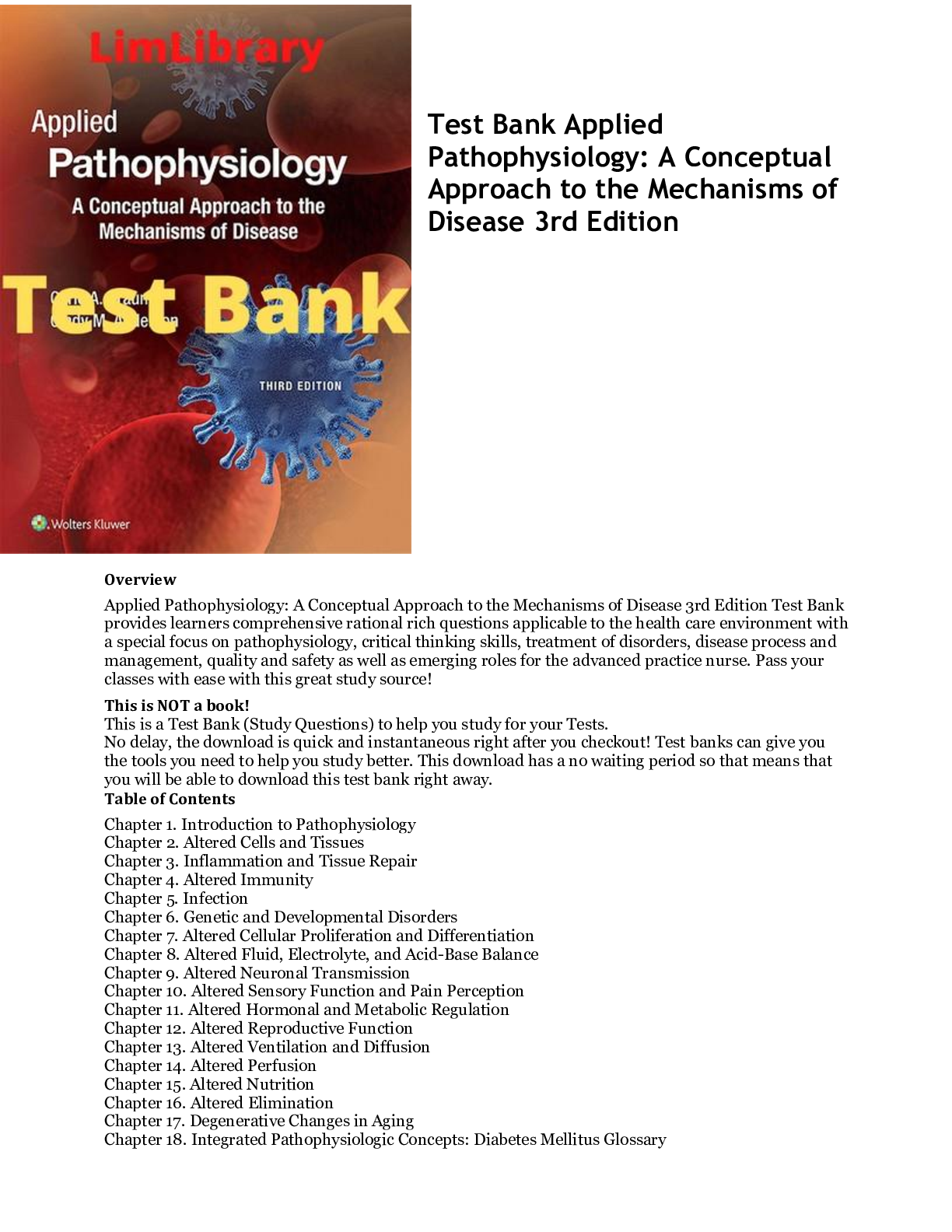

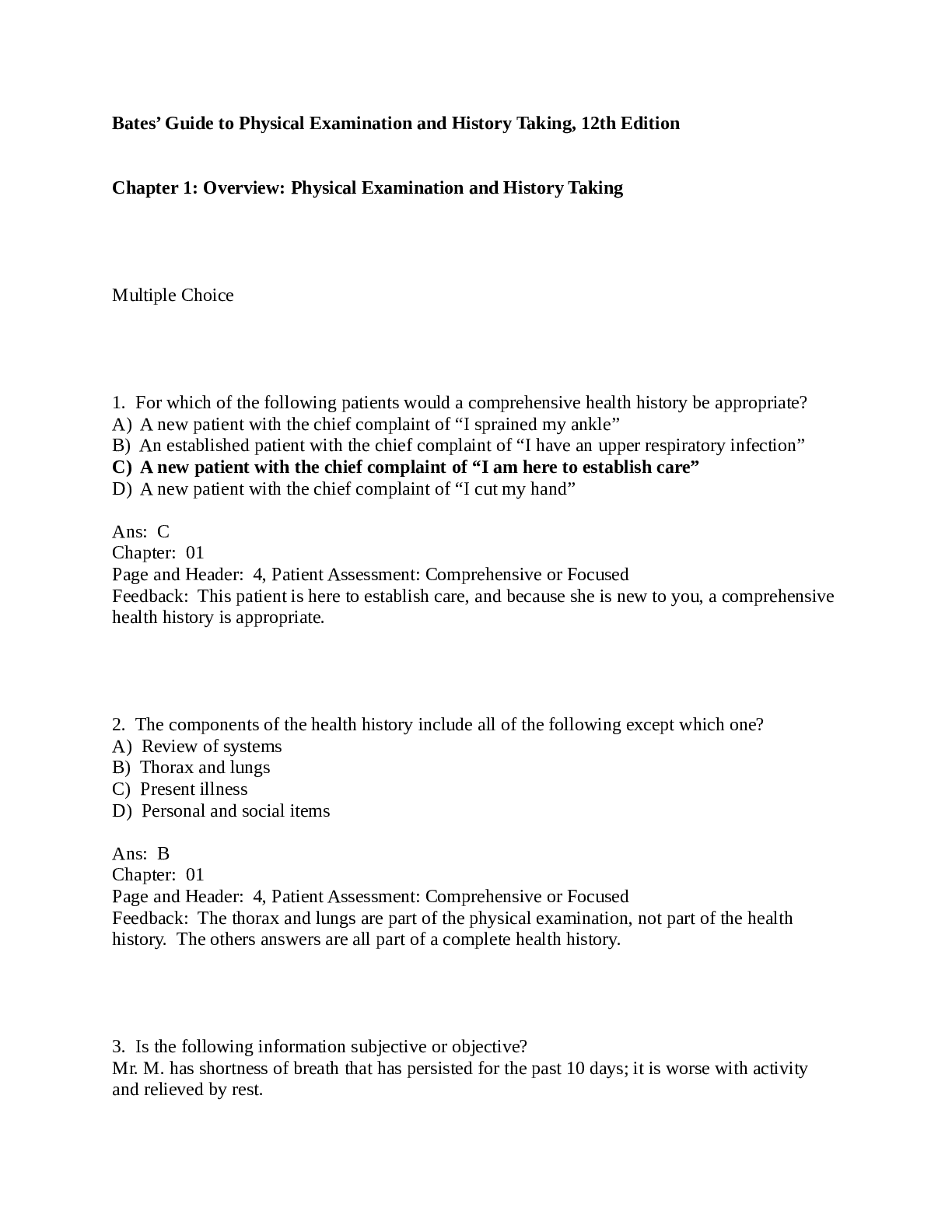
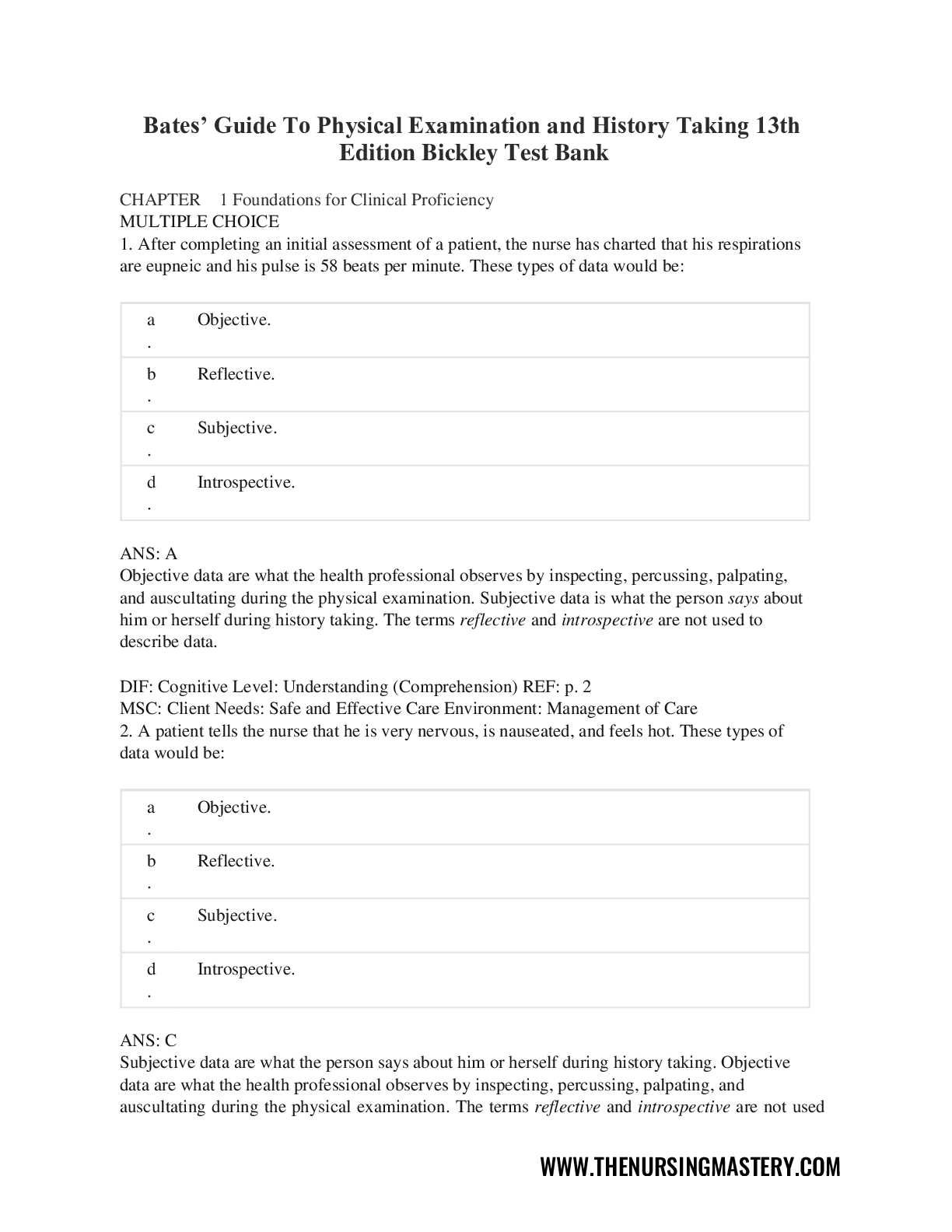
.png)
.png)
.png)

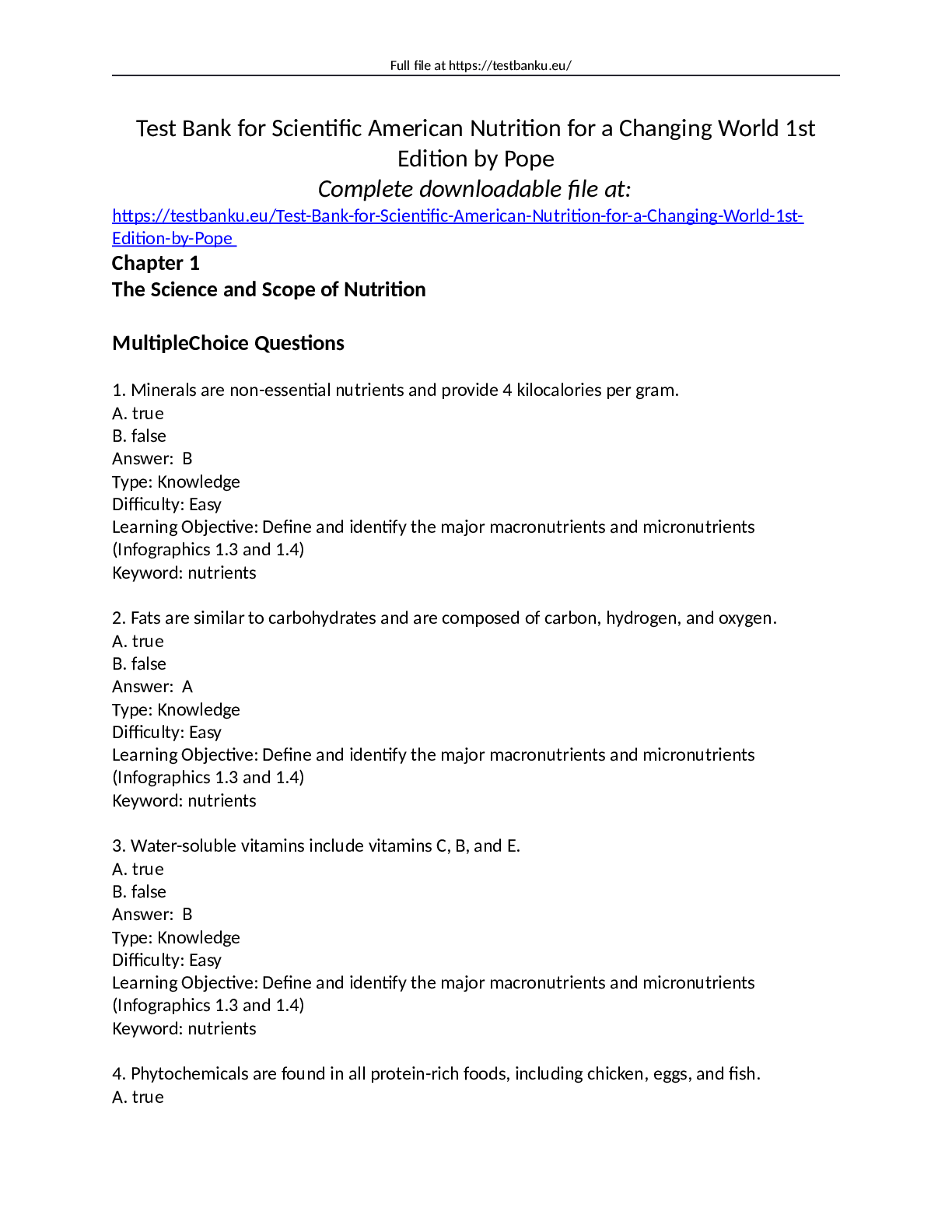
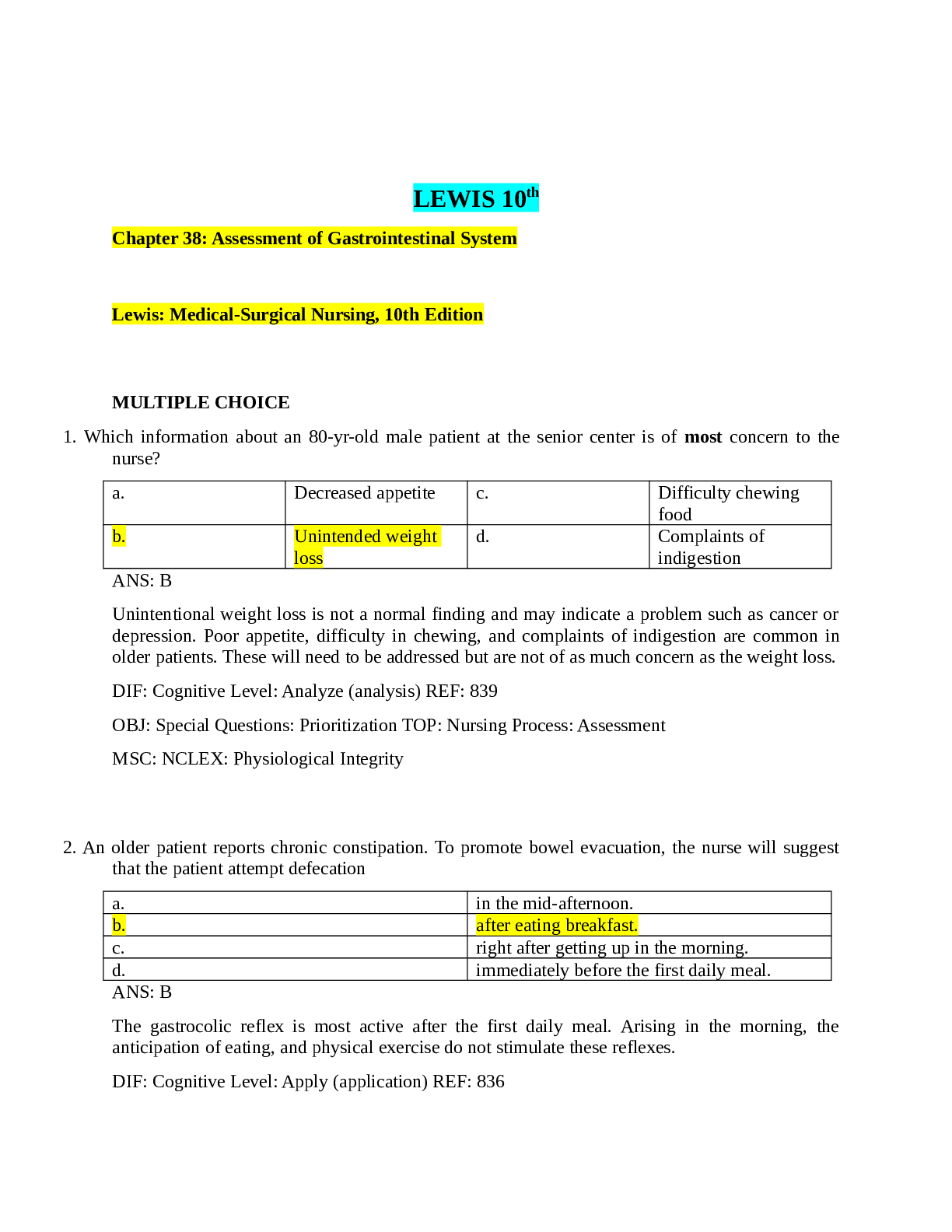

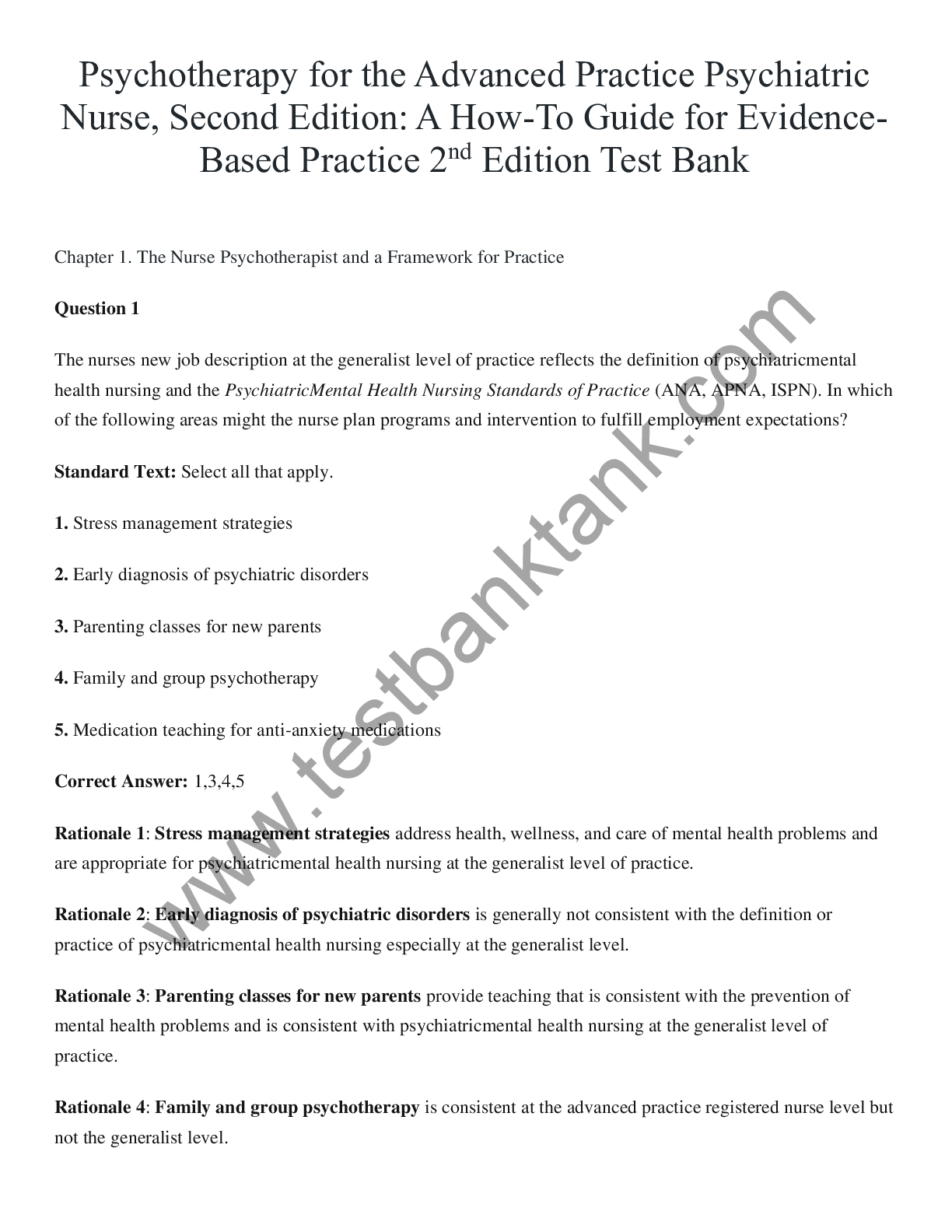
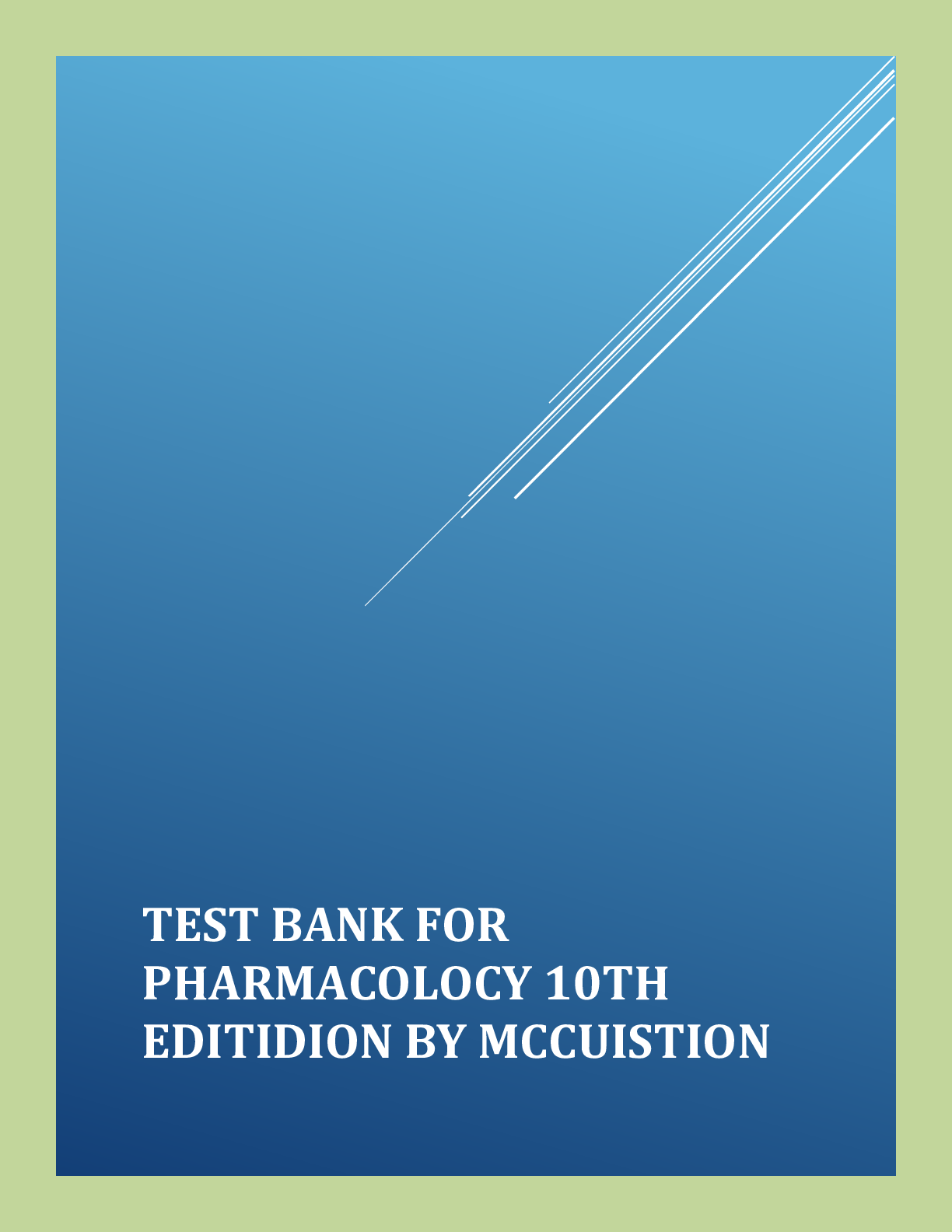
.png)
